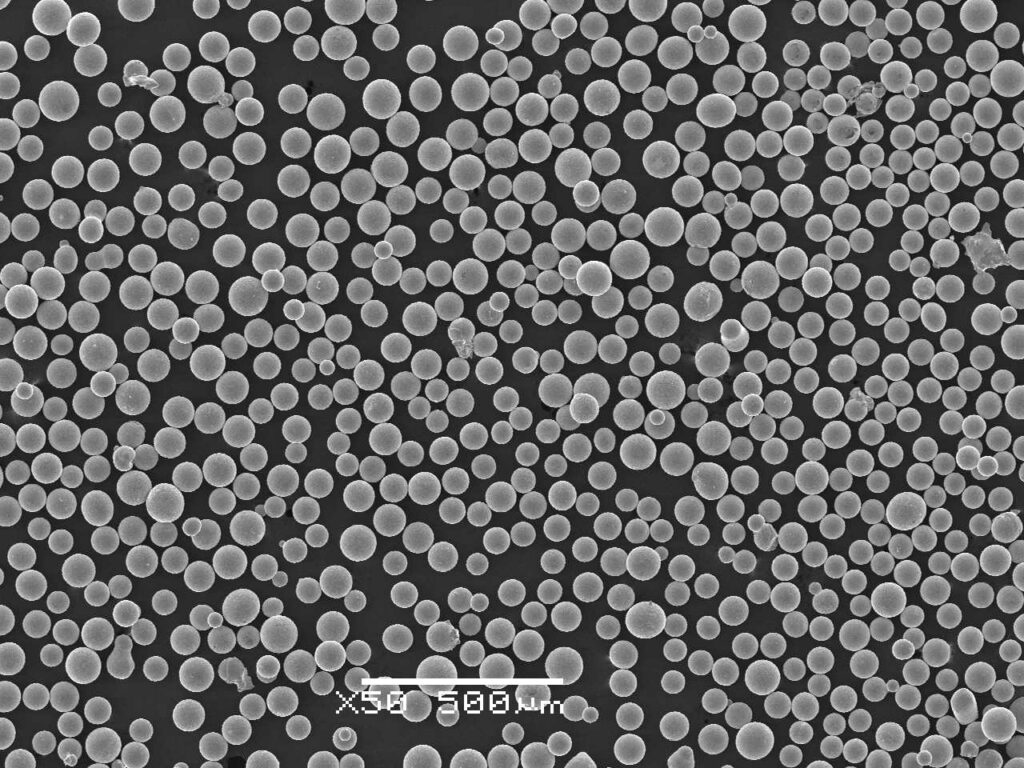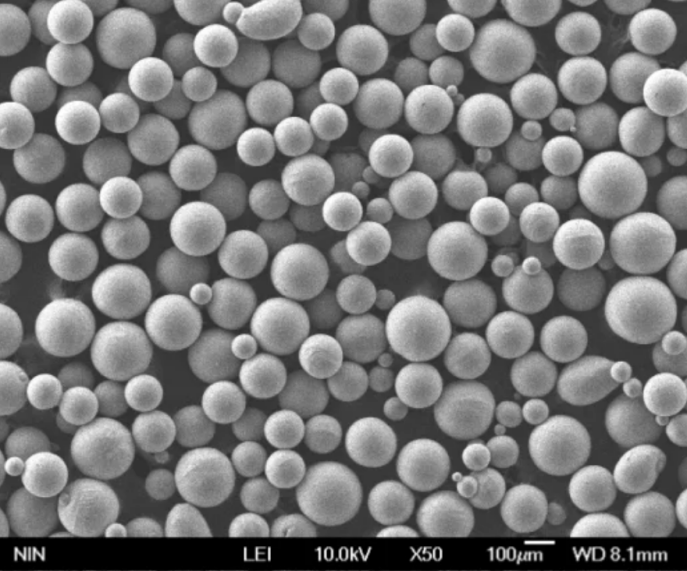Table of Contents
ToggleMolybdenum powder is a versatile material with unique properties that make it ideal for various industrial applications. This guide provides a comprehensive overview of molybdenum powder, including its composition, characteristics, manufacturing process, applications, and more.
Overview of Molybdenum Powder
Molybdenum powder is a powder form of molybdenum metal. It is silvery-white in color and consists of small molybdenum particles that can range in size from 1 to 100 microns.
Key properties that distinguish molybdenum powder include:
- High melting point of 2,623°C making it refractory
- Excellent thermal conductivity for heat dissipation
- Low thermal expansion coefficient minimizing distortion
- Resistance to corrosion in acidic and alkaline environments
- Ability to absorb gases like hydrogen
- Strength and hardness even at high temperatures
These useful traits allow molybdenum powder to serve niche roles across electronics, chemicals, metallurgy, glass, and other sectors.

Composition of Molybdenum Powder
Commercially available molybdenum powder contains a minimum purity of 99% molybdenum by weight. The main impurities are trace amounts of metals like iron, nickel, chromium, and silicon.
| Element | Composition (%) |
|---|---|
| Molybdenum | ≥ 99 |
| Oxygen | ≤ 0.05 |
| Nitrogen | ≤ 0.05 |
| Carbon | ≤ 0.01 |
| Silicon | ≤ 0.01 |
| Nickel | ≤ 0.004 |
| Chromium | ≤ 0.002 |
| Iron | ≤ 0.002 |
High purity grades exceeding 99.9% are also produced. These have stricter control on permissible contaminants tailored to specific end uses.
Characteristics of Molybdenum Powder
Molybdenum powder packs unique performance traits stemming from molybdenum’s inherent metallurgical properties.
Physical Properties
| Property | Specification |
|---|---|
| Color | Silver-white metallic |
| Density | 10.22 g/cm<sup>3</sup> |
| Melting Point | 2,623°C |
| Thermal Conductivity | 138 W/(m·K) |
| Electrical Resistivity | 53 nΩ·m |
| Coefficient of Thermal Expansion | 4.8 μm/(m·K) |
Mechanical Properties
As a refractory metal, molybdenum retains its impressive strength, hardness and creep resistance well beyond the working range of common metals.
| Property | Value |
|---|---|
| Tensile Strength | 560 MPa |
| Yield Strength | 470 MPa |
| Elongation | 38% |
| Microhardness | 2,200 HV |
Reactivity and Corrosion Resistance
Molybdenum exhibits excellent corrosion resistance and chemical compatibility owing to a protective oxide outer layer. This allows it to withstand highly acidic or alkaline conditions.
It does not oxidize in air below 600°C. But above this temperature range, it actively scavenges oxygen, sulfur and carbon compounds. This oxygen absorption ability is harnessed in thermal processing applications.
Overall molybdenum performs well against oxidation and scaling wear mechanisms.
Manufacturing Process for Molybdenum Powder
Molybdenum powder is commercially manufactured from molybdenum ores using various metallurgical and powder processing routes.
1. Extraction from Molybdenite Ore
Molybdenite (MoS2) is the only viable ore source for molybdenum metal production. Concentrates with a high MoS2 content over 85% undergo roasting or pressure leaching to extract crude molybdenum as MoO3.
2. Purification to Technical Grade
Impurities in the raw molybdic oxide are removed through sublimation or chemical treatment. This yields a technical grade MoO3 purity of approximately 99.95%.
3. Hydrogen Reduction
The purified MoO3 is converted into molybdenum metal powder by reduction reaction with hydrogen gas at 700-1100°C.
2 MoO3 + 3 H2 → 2 Mo + 3 H2O
This intermediate molybdenum powder may still contain some oxygen and nitrogen impurities that need to be removed.
4. Additional Refining
For high purity grades, additional steps like electron beam melting in vacuum or thermal deoxidation in hydrogen atmosphere help achieve the desired chemistry and cleanliness.
The powder is then classified into specific particle sizes through crushing, milling and sieving processes. It may also undergo compaction into various pressed and sintered forms.

Applications of Molybdenum Powder
Filaments and Heating Elements
Molybdenum’s refractory nature, thermal properties and oxidation resistance make it ideal for high temperature heating elements and furnace components.
It is most commonly used as winding wire or heating filaments in applications like:
- Electric heating systems
- High intensity discharge (HID) lamps
- Glass melting furnaces
- Sputtering targets
- Vacuum tube electrodes
| طلب | Operating Temperatures |
|---|---|
| Glass melting | 1400-1700°C |
| Diffusion furnaces | 1000-1400°C |
| High temp furnaces | Upto 2000°C |
Powder Metallurgy Products
Molybdenum powder serves as an alloy additive to enhance hot strength, creep resistance, corrosion protection and thermal properties of ferrous and nickel superalloys.
It also aids sinterability during liquid phase sintering. Parts made from Mo prealloyed powders include:
- Turbine engine & rocket nozzles
- Valve guides
- Hot forging dies
- Nuclear fuel claddings
Ceramic Additive
Molybdenum provides oxidative protection for graphite tooling used in the processing of silicon wafers for chip manufacturing.
It’s also utilized in molybdenum di-silicide (MoSi2) heating elements operating beyond typical metallic temperatures.
Lubricant Additive
Organic molybdenum compounds like molybdenum disulfide (MoS2) are premier solid lubricants used as anti-friction, anti-wear additives. They form low-friction films protecting moving interfaces even in high pressure, vacuum or radiation environments.
Sizes Standards and Grades of Molybdenum Powder
Molybdenum powder is commercially available in a wide range of particle sizes, mostly ranging from 1 to 100 microns:
Particle Size Distribution
| Grade | Mesh Size | Microns |
|---|---|---|
| Coarse | -100 mesh | 149 microns max |
| Medium | -325 mesh | 44 microns max |
| Fine | -400 mesh | 38 microns max |
| Very Fine | -635 mesh | 20 microns max |
| Ultrafine | -2500 mesh | 5 microns max |
The common grade specifications as per ASTM standards are:
Molybdenum Powder Grades
| Grade | Purity Mo % | Particle Size | Oxygen ppm |
|---|---|---|---|
| Grade R | 99.5% | -325 mesh | 700 |
| Grade T | 99.7% | -325 mesh | 700 |
| Grade A | 99.9% | -325 mesh | 100 |
| Grade B | 99.95% | -635 mesh | 10 |
| Grade C | 99.99% | -635 mesh | 10 |
High purity grades beyond 99.95% purity use more stringent contamination limits to control individual and total metallic impurities.
Global Manufacturers & Suppliers
Some of the major molybdenum powder producers globally include:
Key Molybdenum Powder Manufacturers
| Company | Location |
|---|---|
| Freeport-McMoRan | USA |
| CXMET | China |
| Molibdenos y Metales S.A | Chile |
| China Molybdenum Co., Ltd | China |
| JDC Molybdenum Co. | China |
Pricing
Molybdenum powder prices fluctuate based on market dynamics and purity grade. Indicative pricing ranges are:
| Grade | Price Range |
|---|---|
| 99% | $25 – $35 per kg |
| 99.9% | $35 – $50 per kg |
| 99.95% | $50 – $90 per kg |
| 99.99% | $100 – $150 per kg |
Contact leading molybdenum powder suppliers for up-to-date price quotes based on your target purity, particle size distribution and annual volume requirements.
Pros & Cons of Molybdenum Powder
Pros
- Outstanding high temperature strength
- Excellent corrosion resistance
- High thermal conductivity
- Controlled oxygen scavenging ability
- Alloying addition to enhance properties
- Serves critical roles not easily replaced
Cons
- Brittle at room temperature requiring alloying
- Prone to embrittlement by impurities
- Relatively rare and expensive
- Challenging to machine in powder form
Comparison With Tungsten Powder
Both molybdenum and tungsten have similar refractory properties. But tungsten exhibits higher temperature capabilities in terms of melting point and recrystallization temperature.
However, molybdenum offers better electrical and thermal conductivity. It also absorbs oxygen more readily at high temperatures whereas tungsten is relatively inert.
This gives molybdenum unique functionality in applications where controlled oxidation is necessary. It also makes molybdenum more amenable for powder processing routes.
Molybdenum Powder vs. Tungsten Powder
| Parameter | Molybdenum Powder | Tungsten Powder |
|---|---|---|
| Melting Point | 2,623°C | 3,400°C |
| Density | 10.22 g/cc | 19.25 g/cc |
| Thermal Conductivity | 138 W/m·K | 173 W/m·K |
| Electrical Resistivity | 53 nΩ·m | 52 nΩ·m |
| Oxidation Resistance | Good | Excellent |
| Oxygen Scavenging | High at ≥ 600°C | Minimal |
| Typical Pricing | $25-150 per kg | $20-50 per kg |
This positions molybdenum and tungsten powders as complementary materials for high temperature applications.

FAQ
What is molybdenum powder used for?
Molybdenum powder has applications as heating filaments and electrodes in high temperature furnaces and lighting, powder metallurgy additive to enhance hot strength and corrosion resistance of alloys, lubricant solid lubricant additive, and substrate for electronics and optics.
Is molybdenum powder safe to handle?
Like most powdered metals, it may cause irritation or sensitivity upon repeated exposures especially when inhaled or ingested. Appropriate precautions should be taken during storage and handling including ensuring adequate ventilation and respiratory protection.
What is the difference between molybdenum powder and molybdenum disulfide?
Molybdenum powder refers to pure elemental molybdenum in a powder form. Molybdenum disulfide is an inorganic compound containing only molybdenum and sulfur. It has a layered structure giving it lubricating properties and graphite-like behaviour.
What is the typical density of molybdenum powder?
The theoretical density of pure molybdenum powder works out to be around 10.22 g/cm. But commercially available powders have lower densities between 70-90% based on factors like particle size distribution and shape. Pressure compaction and sintering can be used to increase powder density up to 95% of theoretical.
Is molybdenum powder ferromagnetic or paramagnetic?
Molybdenum is a paramagnetic metal, meaning it is attracted slightly by magnetic forces. But it does not retain magnetization once the field is removed. This makes it suitable for applications requiring minimal ferromagnetism compared to ferritic alloys.
Conclusion
With its versatile mix of refractory, conductive, protective and lubricative characteristics, molybdenum powder provides niche functionality across several industries that cannot be easily substituted.
It serves critical roles in electrical heating systems, high performance alloys, and solid lubricant additives that underpin modern manufacturing, transportation and processing industries.
Though relatively more expensive than its sister refractory material tungsten, ongoing advances in extraction processes and the lack of viable alternatives ensures molybdenum powder retains a strong market position thanks to its unique materials science advantages.






